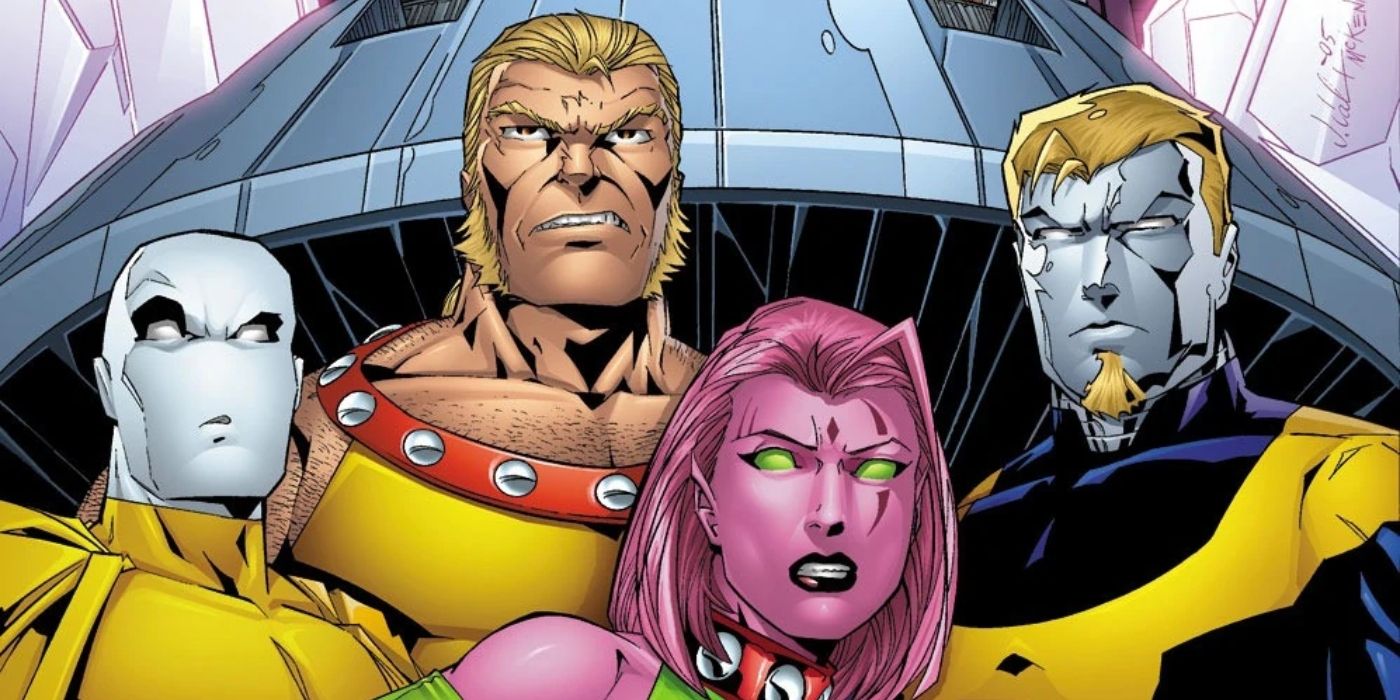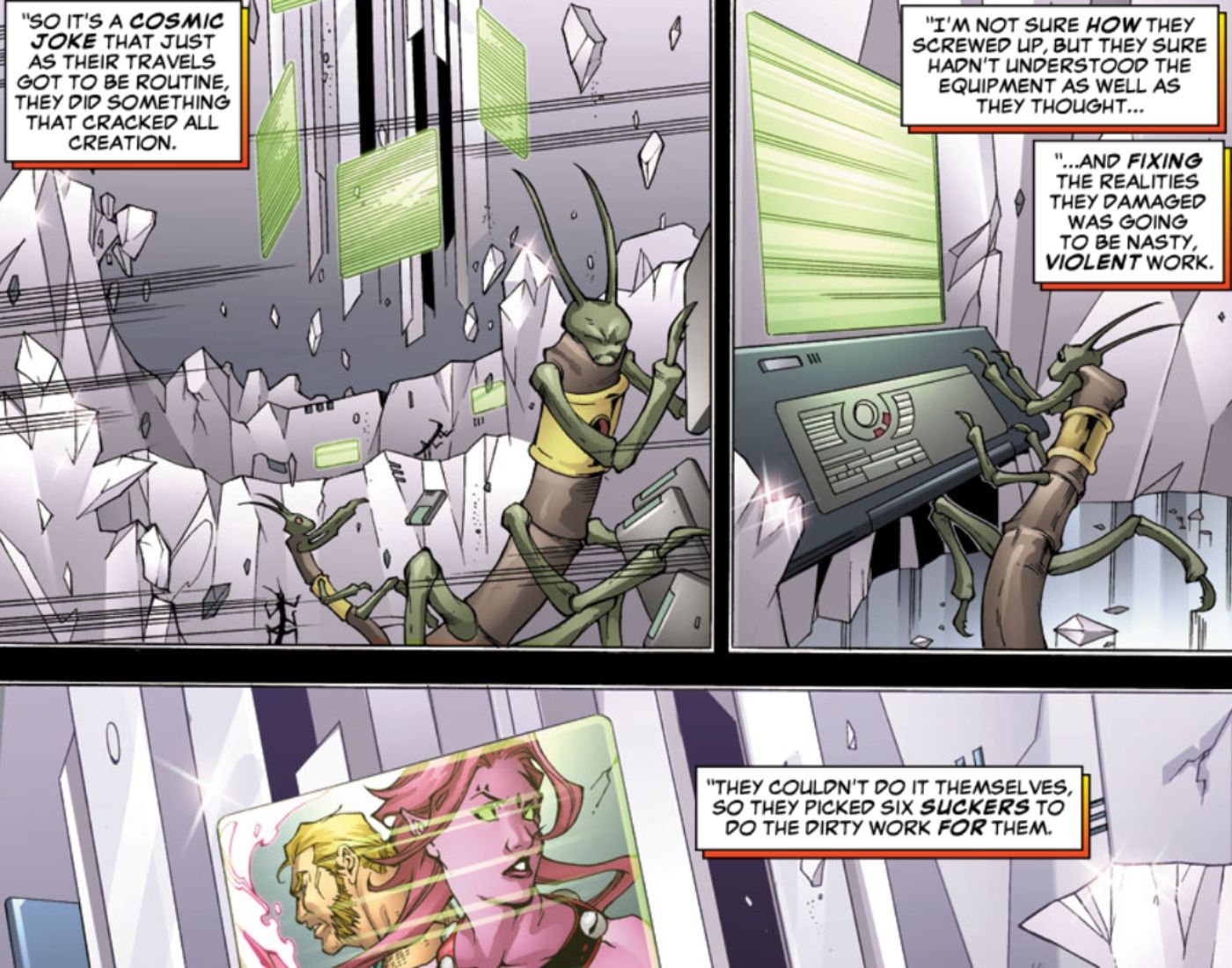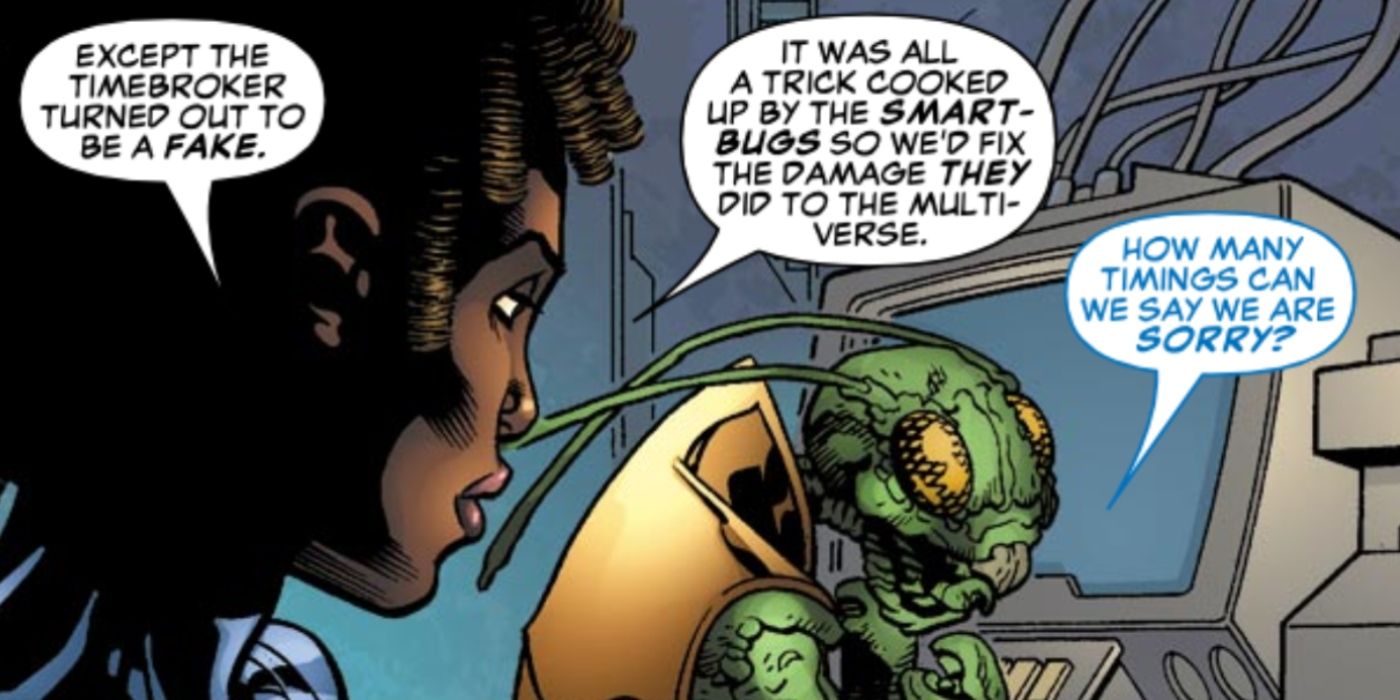The Marvel multiverse is of a scale that allows for all sorts of unlikely threats and dangers to present themselves. To some, like the Watchers, it's important to remain removed from the elements and events that can define the course of events on a truly massive scale.
But for other species, it's more important to actively make up for their past mistakes. Take for example the Timebreakers, the mysterious race of insectoid beings introduced in Exiles #62 (by Tony Bedard, Mizuki Sakakibara, JC, and Dave Sharpe) who formed the Exiles in an attempt to undo the damage they inflicted on the multiverse.
Who are Marvel's Timebreakers?
The first Timebreakers were an insectoid race of multiversal explorers who, on their travels, came across an abandoned facility outside of space and time that would eventually be dubbed the Crystal Palace. Within the pocket dimension was the ability to observe the entirety of the Marvel Multiverse -- and befitting their history as explorers, the Timebreakers decided to map every reality. However, these acts of interference resulted in a cascading effect on the stability of the multiverse. Seeking to repair the damage they'd done, the Timebreakers devised a plan -- monitoring the multiverse from the Crystal Palace, they would recruit various heroes from across dimensions and send them into damaged realities, ensuring these worlds ultimately went down their preordained path.
To hide their identities, the Timebreakers used a hologram to create the Timebroker -- a humanoid and typically friendly figure who could ease the chosen heroes into their mission. They also helped create the Tallus using shards of the M'kraan Crystal to serve as a communication device and means of travel across timelines. This led to the formation of the Exiles, a band of multiversal mutant heroes who ventured from world to world, helping ensure the stability of the multiverse -- as well as their more lethal counterparts, known as Weapon X. Any who fell in the line of duty would be kept within the Crystal Palace, in hopes of avoiding any further damage to the multiverse. Unfortunately, this habit ended up coming back to haunt the Timebreakers -- and almost the entire multiverse.
Marvel's Timebreakers and Watchers are Very Similar
One of their recruits to Weapon X -- who'd later dub himself King Hyperion -- was a truly despicable version of the powerhouse, the last survivor of his world. After having been seemingly killed by the Exiles, he was brought to the Crystal Palace -- where he had time to heal and eventually break free. Taking control of the Timebreakers, Hyperion manipulated the Exiles for a time before they discovered the truth and helped save the Timebreakers. In turn, the Exiles more openly worked with them for a period, with the Heather Hudson of Earth-3470 serving alongside them at the Crystal Palace. The Timebreakers would later decide to depart and would be replaced by other explorers, including a variant of Kang -- and the more recent iteration of the Exiles didn't incorporate the Timebreakers into their mission at all. But the insectoid race remains a compelling contrast to another race of multiversal observers.
In many ways, the Timebreakers are similar to the Watchers, the ancient species who observed timelines from across the multiverse. Like the Watchers, the Timebreakers had interfered in a timeline and seen the results of their work. But whereas the Watchers elected to remain on the sidelines as a result of their actions, the Timebreakers elected to do something about it. It quietly suggests they may be more fallible than the Watchers, but that they had a greater sense of duty to right the wrongs of their mistakes. While the Watchers largely abhor interference, the Timebreakers were more willing to undo the damage they'd done -- even if meant tricking a series of intermediaries who could accomplish the tasks they couldn't.
It makes the Timebreakers more manipulative than the Watchers -- but potentially more heroic, as their actions helped ensure the continued survival of the multiverse. It also means that the Exiles can come up against the Watchers, as they did in the third volume of Exiles -- potentially setting the stage for an eventual conflict with the Timebreakers now that the Watchers are more willing to look at their own actions and take part in the overall events of the multiverse.



